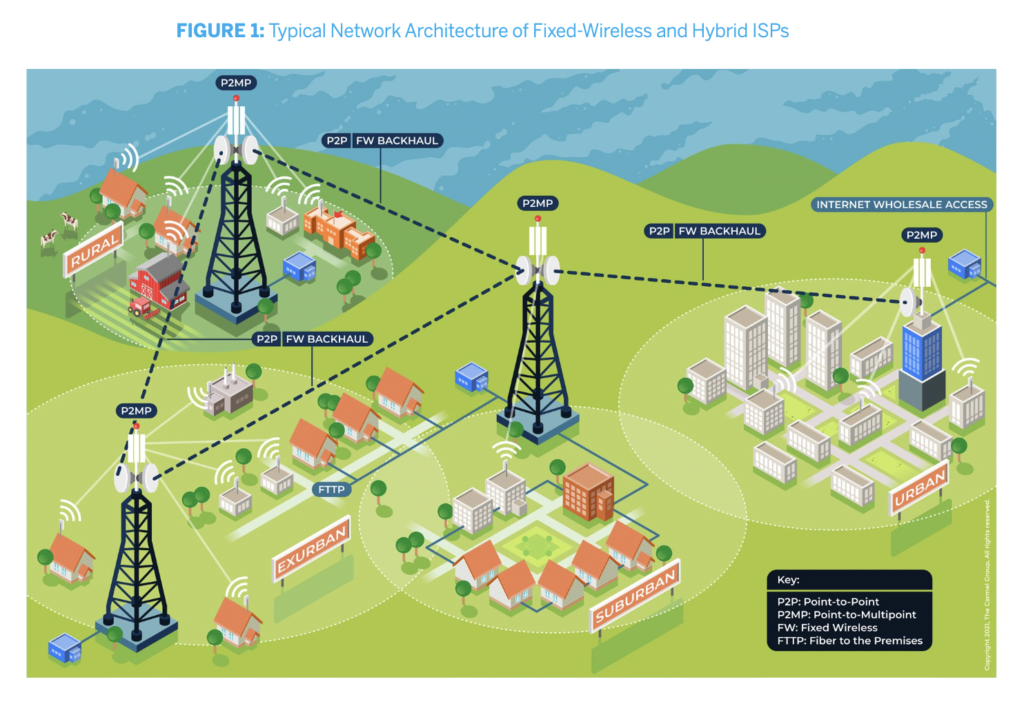
Succeed.net connects to the internet through a high-speed fiber connection connected directly to the fiber backbone that runs through California.
This high-speed connection is then distributed via wired and wireless connections to our many wireless towers reaching from Orland to West Sacramento, Rancho Cordova, Roseville, Yuba City, Williams to Oregon House. See our Air Fiber coverage map.
The wireless transmitter/receiver installed at your location creates an encrypted connection with one of our local wireless towers bringing the internet to your location.
The internet connection to your location will function just as if you were plugged into any typical Internet computer network, providing you with a secure and high-speed connection that you are able to distribute to the other ethernet and wifi connected devices at your location.
No! Fixed Wireless Internet is true local area high speed broadband unlike satellite solutions that typically have slower speeds, slow uploads, and very high ping times (aka lag). Satellite connections are poorly suited to internet access with pings times up to to 900ms making any interactive Internet application unusable (games, telephony, webcams, VOIP, VPN, etc). This is because of the distance the data has to travel back and forth from outer space is a physics limitation. Our wireless Internet services typically have less than 10-30ms ping times, high or unlimited monthly data caps, and is more like cable or fiber internet.
Our Air Fiber Internet is a Fixed Wireless (requires clear line of sight) high speed broadband Internet access service that uses fixed location microwave radios on a tower (that could be a tower, tall building, or mountaintop) instead of phone or cable to bring high speed Internet access to your location. This service is suitable for home and business use and is similar experience and performance to Fiber & Cable Internet services (high speeds, stable low ping times) and superior to DSL, Cellular, or Satellite (lower speeds, low monthly data limits, unstable or high ping times).
A small antenna 6-14″ (smaller than satellite) is installed on your roof with an attached low power radio receiver/transmitter and connected via an outdoor rated ethernet cable that also provides power to the radio via POE (power over ethernet standard). This antenna is pointed at a nearby Access Point tower (usually 1-10 mile away). When you send and receive information over the Internet, it goes over the wireless link from your radio/antenna to our Access Point. From there that information travels over our faster FCC licensed frequency wireless or fiber optic “backhauls” eventually connecting to Enterprise grade fiber optic connections. Due to the design of our network, even if a local area major fiber lines are cut our wireless core network reroutes traffic around the outages via our private wireless network to keep your connection up.
With speeds up to 500 Mbps in both directions and ping times in the 1-25ms range, Fixed Wireless Broadband does not require a cable connection or even a telephone line. It is resilient and reliable even during rain storms and typically affected only slightly by weather (5-10%).
We provide all the equipment, cabling and installation at your location. Our Wireless Broadband is compatible and well suited for use with Streaming TV, VPN’s, VOIP, Static IP’s, Online gaming, Macintosh, Windows, Unix, Xbox, Smartphones, iPad, Android, etc.
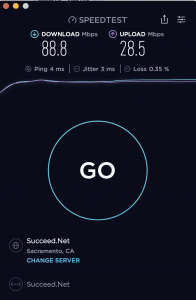 For what most people do on the internet such as email, web or cloud applications, shopping, reading, or online school anything of 10mbps or more is usually enough, but below are some situations that could make you need or want more. Most households don’t need more than 50 to 100mbps. There is nothing you can’t do with 50mbps and all you gain over this is faster downloads or support for a 5+ streamers at the same time. Gigabit although it sounds amazing, if it’s not super cheap, you don’t gain any lower latency or any new abilities to do anything. You just gain faster downloads of very large multi Gigabyte files or updates.
For what most people do on the internet such as email, web or cloud applications, shopping, reading, or online school anything of 10mbps or more is usually enough, but below are some situations that could make you need or want more. Most households don’t need more than 50 to 100mbps. There is nothing you can’t do with 50mbps and all you gain over this is faster downloads or support for a 5+ streamers at the same time. Gigabit although it sounds amazing, if it’s not super cheap, you don’t gain any lower latency or any new abilities to do anything. You just gain faster downloads of very large multi Gigabyte files or updates.
*Internet services that require unusual amounts of bandwidth and data caps:
Here is a nice tool with sliders to figure out how much you need: Bandwidth Calculator
* Most common list, but not meant to be a complete list of obscure or unusual needs of special services.
Latency (also known as ping time) is a term used to describe how long it takes a “packet” of information sent from your computer to a server on the internet and back to your computer again. This measurement is vital to a network because it can significantly slow down your top speeds and severely affect services such as VOIP, Voice Chat, Online Gaming, Remote control computers, Virtual reality, Video Conferencing, etc. Satellite and cellular based internet typically has delays commonly in the range of 300-900ms while our fixed wireless internet service has average ping times typically under 30ms.
Weather will not cause a degradation of service except during some severe storms. It is less affected from rain than a satellite dish. Your connection will normally remain stable during winter months or other stormy periods. Once a year severe rains or winds that are continuous over several days may cause some degradation of service but most customers experience a 99.9+% uptime. Wireless Internet access requires a “line‐of‐sight” connection from your structure to one of our towers. This means that any large trees, buildings or other obstructions may cause a degraded level of service. The most common cause of service quality degradation is trees growing into the line-of-site between your radio and the tower or antennas getting out of alignment due to high winds.
Understanding Required Line of Sight Limitations used by Fixed Wireless ISP’s
Line of sight is simply standing between the mounting position of the antenna at client building and looking through binoculars so you can clearly see the other side of the wireless connection you intend to create. Usually this is “good enough” to get a stable good fixed wireless connection.

Why sometimes even a clear “Line of Sight” between your location and a tower isn’t good enough:
Fixed Wireless Internet access is based on low power radio signals in unlicensed microwave spectrums. Because of this there are limits to what the signal may be obstructed or reduced by to unusable levels. Even though you may be in our coverage area, it does not guarantee you can get a connection. You must have clear line of sight from your location to receive the Wireless Internet service that is not obstructed by trees, other buildings or any other physical blockage to one of our towers unlike cell phones which rely use much high power and sacrifice roaming for stability of latency (ping times) and speed.
Wait, not so fast! Even if you can clearly see between your location and a Wireless access point it, the signal may STILL BE REDUCED if there are obstructions in the “Fresnel zone“. If unobstructed, radio waves will travel in a straight line from the transmitter to the receiver. But if there are obstacles near the path, the radio waves reflecting off those objects may arrive out of phase with the signals that travel directly and reduce the power of the received signal to some degree depending on amount and type of obstructions just NEAR the line of sight. But in general “IF YOU CAN SEE OUR TOWER, MOUNTAIN, SILO, ETC. YOU CAN GET SERVICE”!
There are various ways to overcome these obstacles, such as: Mounting to existing towers or TV masts, installing small towers or masts, removing or trimming trees or tree limbs, etc. Overcoming significant obstacles to line of sight issues are not included with any standard installation and may be an extra charge if necessary but are typically not required.
We employ various security measure with all of our wireless networking equipment to encrypt your communications throughout our network. The security of our wireless network starts with WPA2-AES encryption coupled with proprietary outdoor optimized wireless data packets between your radio and our tower along with other security measures and authentication methods to ensure that only authorized devices are allowed access to the network. AES is a more secure encryption protocol introduced with WPA2. AES isn’t some creaky standard developed specifically for wireless networks, either. It’s a serious worldwide encryption standard that’s even been adopted by the US government. We also have deployed unique monitoring and DDOS (distributed denial of Service) mitigation routers and react within seconds of an attack against our systems AND even our customer connections.
Succeed.Net professionally mounts an antenna and radio (most of the time this is a single unit) on your roof, then runs an outdoor UV rated gigabit capable CAT 5e Ethernet cable down the outside wall of your home or business (we try to follow a path to hide the cable and look good cosmetically). We then bring the wire into your home by drilling a small hole or following an existing entry into the home such as a duct or prior cable, phone or satellite TV installation entry. This hole is weather sealed and includes a grommet. The Ethernet cable going into the house is terminated with a CAT5e cable end to connect to to a POE (Power over Ethernet) injector. A standard Ethernet patch cable is then connected between the POE device and then directly to your computer or your router. If you need additional inside wiring to extend the connection into your home, you may need to hire a wiring contractor or may want to consider using a WiFi router (available at computer and electronics stores). We also offer managed WiFi system from us for $10 / month (per 2,000 sq ft) to distribute your new Internet connection throughout your home or business.
The antennas range in size from a small 4″ x 12″ panel to a 18″ dish depending upon your distance from the access point. They are all very lightweight, super low power (~9-18 watts) and are easier to install than a TV satellite dish.
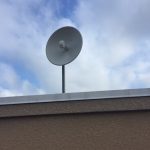

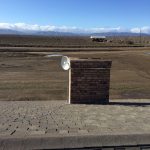
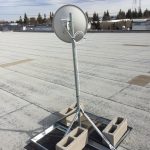
No, a phone line is not needed . The Wireless Internet connection is bi-directional, meaning your Succeed Internet service is a complete broadband solution. You can also replace your land line phone system with less expensive VOIP service. Or even just get one of our inexpensive call forwarding services such as our home-to-cell service for only $9.99 and drop your home phone service but KEEP YOUR PHONE NUMBER and start receiving those calls on your cell phone and save $40/ mo or more.
Residential:
Succeed, Inc bills by credit card or ACH (eCheck). Succeed automatically debits your credit card or bank account every month for the cost of your service and will send you an email invoice/receipt of your payment.
Business:
Succeed, Inc bills accepts credit cards, ACH (eCheck) is PREFERRED, or Company Check and will send you an email invoice/receipt of your payment. Paper invoicing is also available for an additional $2/mo fee.
Past invoices and payments are available for review at any time on our customer portals for all accounts. You can also change update your credit card or switch to ACH billing online.
Local Number Portability (LNP)
Local Number Portability (LNP) enables customers in the United States to transfer their existing telephone number (traditional or Internet-based) from one phone service provider to another. With Succeed.Net Digital Phone Service, you can request that your number be transferred free of charge at anytime during the initial order process or even after you have become a Succeed.net customer, as long as you maintain phone service for the number you want to transfer.
Transfer time and process of transfer
Succeed.Net makes every attempt to work with all telephone service providers across the United States; however certain local or regional guidelines may preclude us from being able to transfer your number. In such cases, a new number from Succeed.Net would be provided. In most cases, we can transfer your number within 15 business days from when you submit the number transfer request, provided that all the correct information and documentation is submitted, including a correctly filled out Letter of Authorization (LOA) and the correct Billing Telephone Number (BTN). In some cases, number transfers can take up to 30 days depending on when your current provider releases your number(s).
During the transfer process, Succeed.Net will provide a temporary phone number. After your number has been transferred, your former phone service provider may automatically discontinue your service with them, however, you should contact your former phone service provider to confirm this. Succeed.Net will work with you every step of the way should you have questions and need help submitting your number transfer request.
Yes you can on business accounts! Our system supports audio files (.wav, .mp3) for your own music on hold or advertising on hold. We can do it company wide, per queue (such as sales or support), and even down to per user. Make sure you have rights to the content. This change must be done by our friendly VOIP admins so please contact support to get this done.
We have no affiliation with these, but here are some links to some sources of royalty-free hold music:
easyonHold – All types of music to fit your business type
Pleasehold – Advertising or commercials on hold
Yes. As opposed to traditional telecom service providers, our services are as mobile as you are. With all our accounts, you can keep your phone numbers and Succeed.net provided VoIP phone equipment from another city regardless of where you are located. That is one of the great benefits of Succeed.net VoIP phone service. The service does require a DSL, Cable or better connection to function properly. Your internet connection can have a large effect on the quality and consistency of your service. Succeed.Net Internet Access services will ensure the best results.
